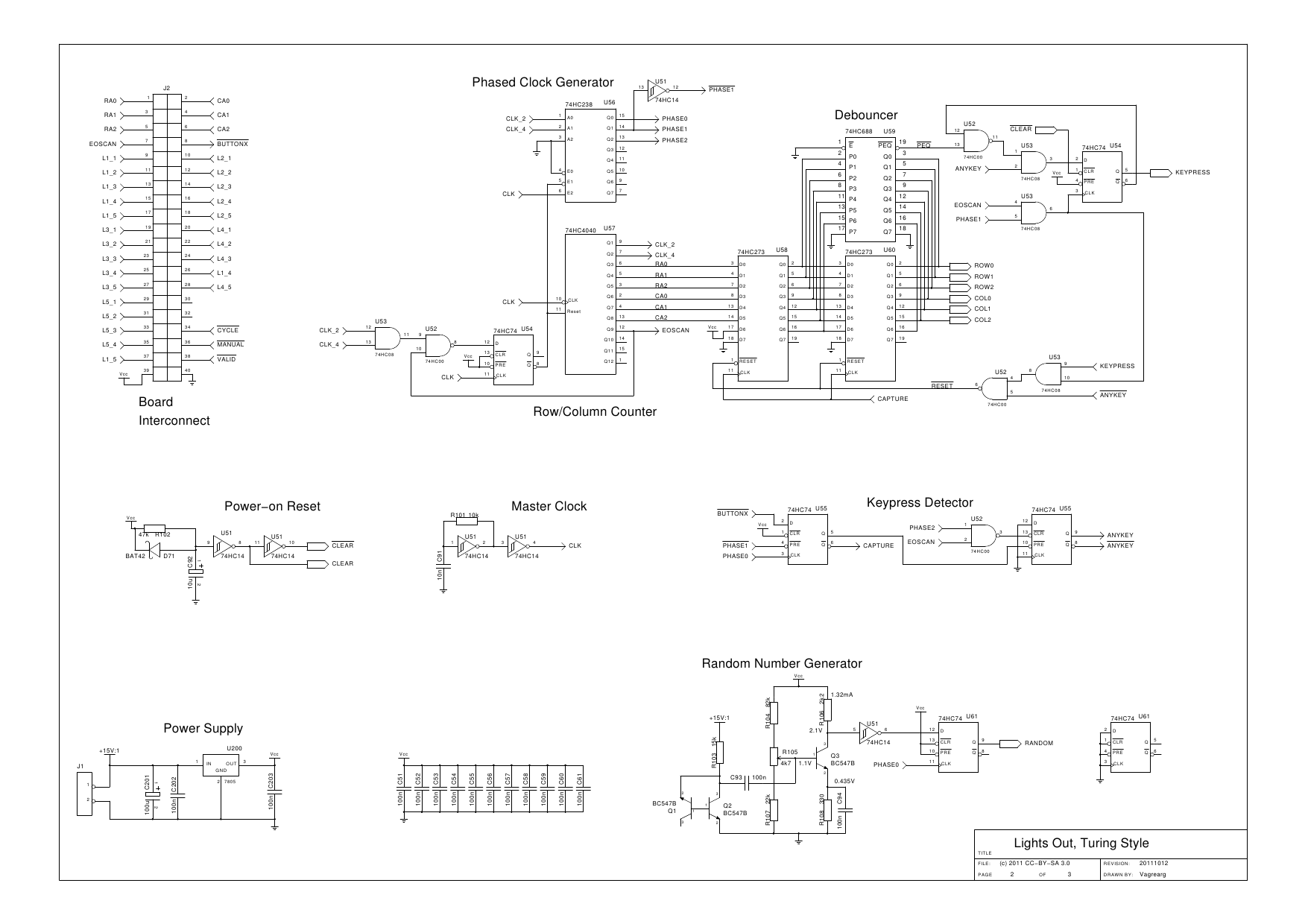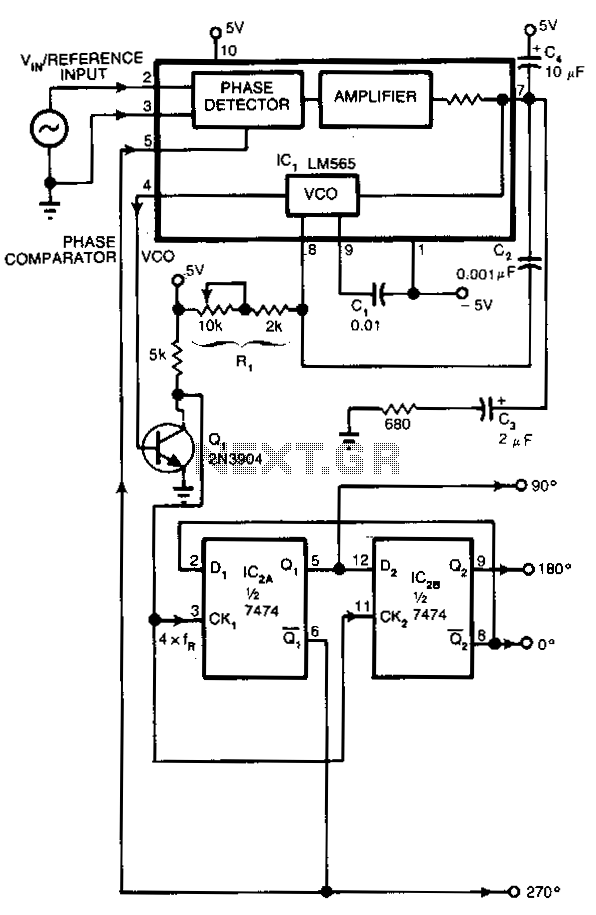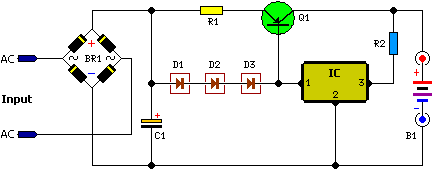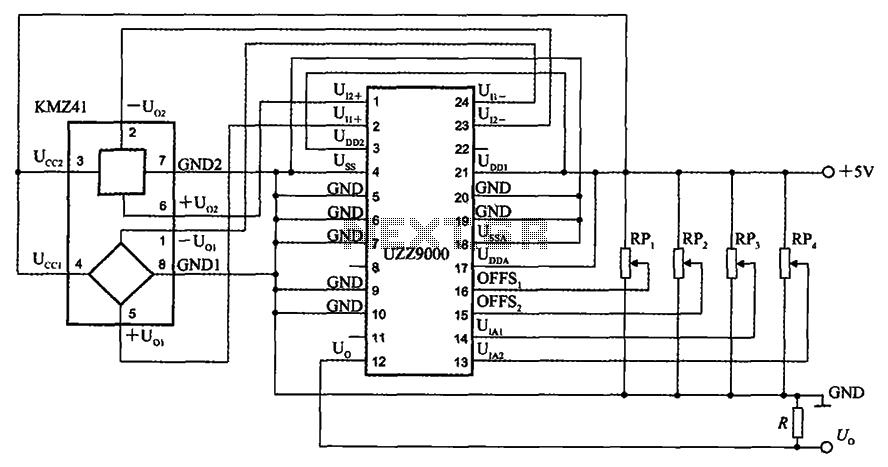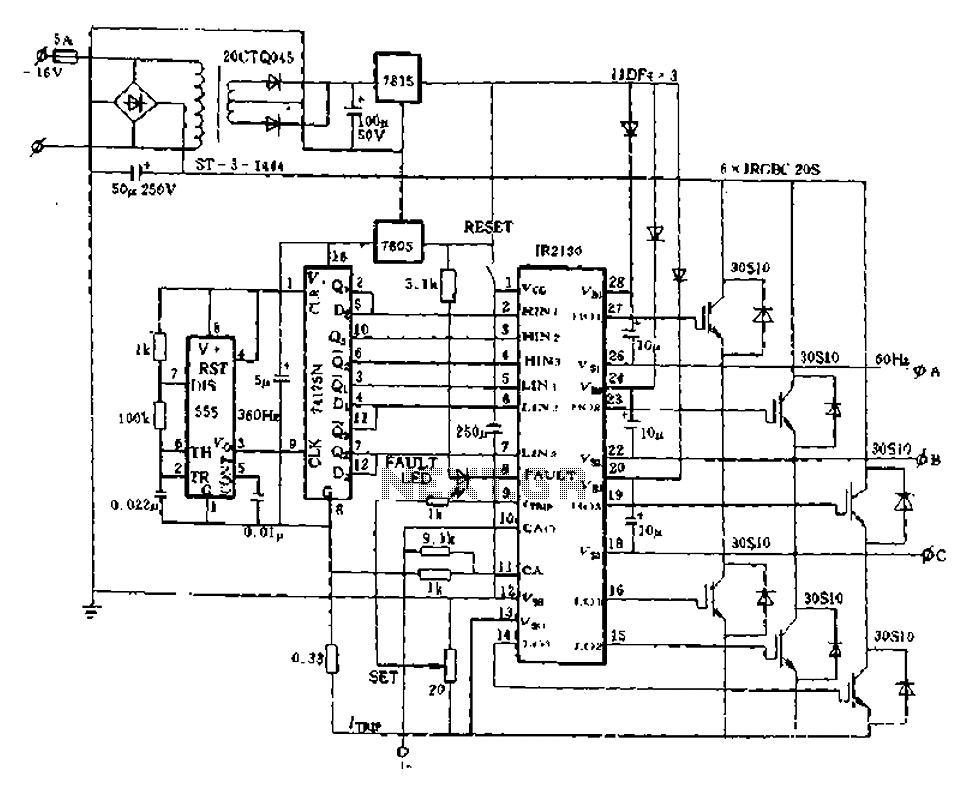
Analogue Inputs to MIDI Out
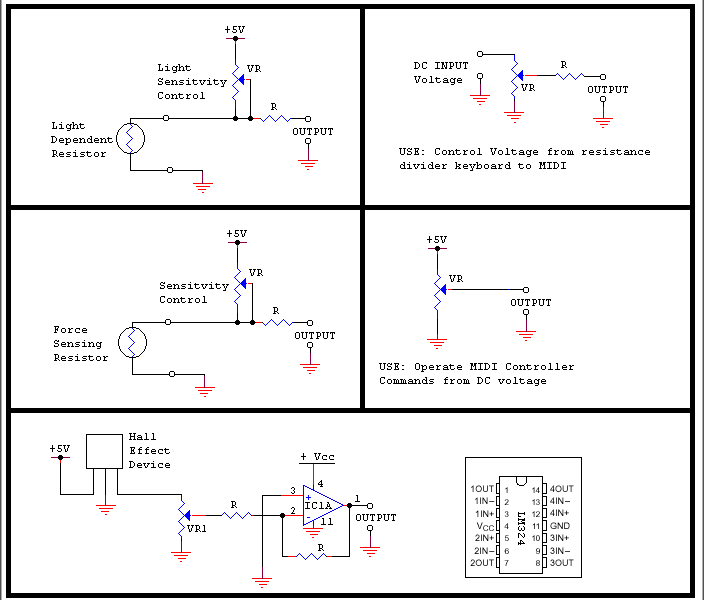
This device supports up to 8 analog inputs with a voltage range of 0 to 5 volts, generating selectable MIDI control output commands. The analog inputs can include rotary or slider potentiometers connected to the 0 to 5 volts supply. Additionally, inputs may be interfaced with Force Sensing Resistors (FSR), Light Dependent Resistors (LDR), or Magnetic Hall Effect Sensors. It is important to ground any unused inputs to the 0 Volt line to avoid picking up unwanted noise. Upon power-up, if the Menu switch is held ON, the unit enters programming mode. Each press of the Menu switch navigates through the menu options. Programming the Analog to MIDI Unit is a one-time process, with range values stored in the internal EEPROM, allowing the unit to retain its settings even when powered off, until reprogrammed. In Normal mode, the device scans the 8 analog inputs and transmits the corresponding MIDI controller data over a specified MIDI channel, which can range from 1 to 16, while the controller values range from 0 to 121 as indicated in the accompanying table.
This device is designed for seamless integration into MIDI control systems, providing a flexible solution for a variety of applications requiring analog input conversion to MIDI signals. The analog inputs can be utilized for various sensor types, enhancing versatility in interfacing with different hardware components. The use of potentiometers allows for precise control over MIDI parameters, making it suitable for musical instruments and performance applications.
The programming mode facilitates easy customization of the MIDI output, allowing users to adjust the range values to match their specific needs. The internal EEPROM ensures that settings are retained, which is crucial for applications where consistent performance is required after power interruptions. The scanning of analog inputs in Normal mode ensures that real-time data is transmitted efficiently, maintaining responsiveness in live performance scenarios.
Proper grounding of unused inputs is critical in minimizing noise interference, which can affect the integrity of the MIDI signals. This design consideration enhances the reliability of the device in various environments, particularly those with potential electromagnetic interference.
Overall, this device provides a robust framework for converting analog signals into MIDI commands, offering flexibility, reliability, and ease of use for electronic musicians and developers alike.This allows up to 8 analogue inputs (with a range from 0 to 5 volts) to produce selectable MIDI control output commands. The analogue inputs could be rotary or slider potentiometers which are connected to 0 to 5 volts. Also the inputs could be connected to Force Sense Resistors (FSR), Light Dependent Resistors, Magnetic hall effect sensors via suit
able interfacing etc. Note that unused inputs should be grounded to the 0 Volt line to prevent spurious noise pickup. At power-on, if the Menu switch is simultaneously held ON, then the unit will enter programme mode. Then each push of the menu switch moves through the menu. The menu consists of the following: Programming the Analogue to MIDI Unit only has to be done once and the range values are stored internally in the EEPROM and the unit will continue to operate in this mode, even when power is removed, until reprogrammed. In Normal mode the 8 analogue inputs are scanned and the corresponding MIDI controller data is transmitted on a particular MIDI channel.
The MIDI channel has a range from 1 to 16 and the controllers range from 0 to 121 as shown in table 1. 🔗 External reference
This device is designed for seamless integration into MIDI control systems, providing a flexible solution for a variety of applications requiring analog input conversion to MIDI signals. The analog inputs can be utilized for various sensor types, enhancing versatility in interfacing with different hardware components. The use of potentiometers allows for precise control over MIDI parameters, making it suitable for musical instruments and performance applications.
The programming mode facilitates easy customization of the MIDI output, allowing users to adjust the range values to match their specific needs. The internal EEPROM ensures that settings are retained, which is crucial for applications where consistent performance is required after power interruptions. The scanning of analog inputs in Normal mode ensures that real-time data is transmitted efficiently, maintaining responsiveness in live performance scenarios.
Proper grounding of unused inputs is critical in minimizing noise interference, which can affect the integrity of the MIDI signals. This design consideration enhances the reliability of the device in various environments, particularly those with potential electromagnetic interference.
Overall, this device provides a robust framework for converting analog signals into MIDI commands, offering flexibility, reliability, and ease of use for electronic musicians and developers alike.This allows up to 8 analogue inputs (with a range from 0 to 5 volts) to produce selectable MIDI control output commands. The analogue inputs could be rotary or slider potentiometers which are connected to 0 to 5 volts. Also the inputs could be connected to Force Sense Resistors (FSR), Light Dependent Resistors, Magnetic hall effect sensors via suit
able interfacing etc. Note that unused inputs should be grounded to the 0 Volt line to prevent spurious noise pickup. At power-on, if the Menu switch is simultaneously held ON, then the unit will enter programme mode. Then each push of the menu switch moves through the menu. The menu consists of the following: Programming the Analogue to MIDI Unit only has to be done once and the range values are stored internally in the EEPROM and the unit will continue to operate in this mode, even when power is removed, until reprogrammed. In Normal mode the 8 analogue inputs are scanned and the corresponding MIDI controller data is transmitted on a particular MIDI channel.
The MIDI channel has a range from 1 to 16 and the controllers range from 0 to 121 as shown in table 1. 🔗 External reference
